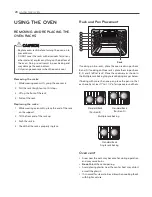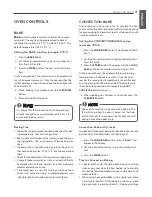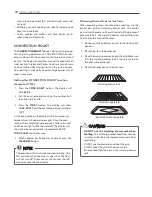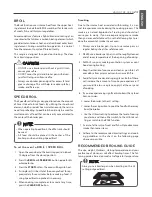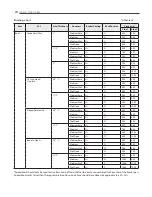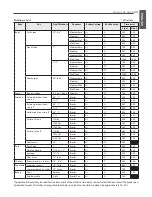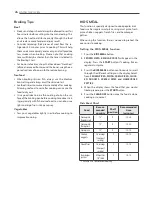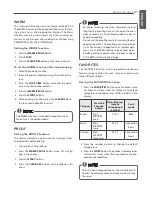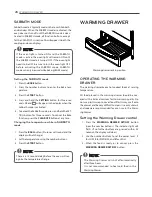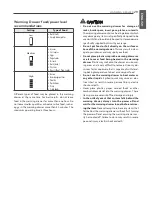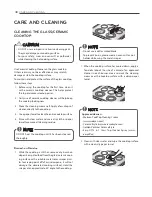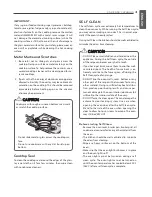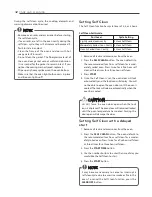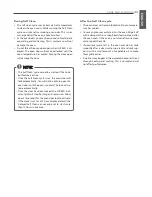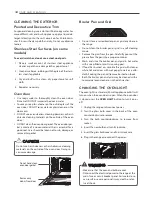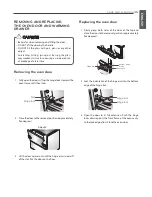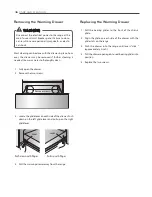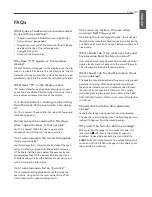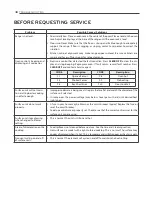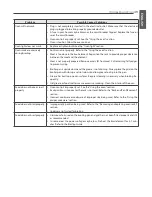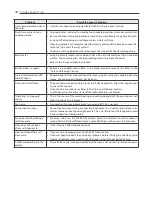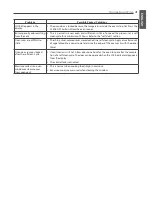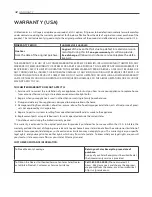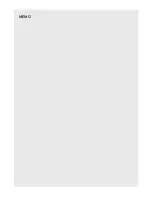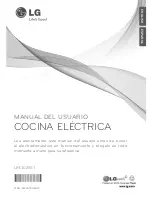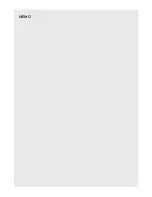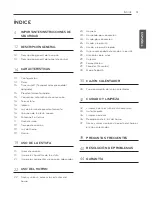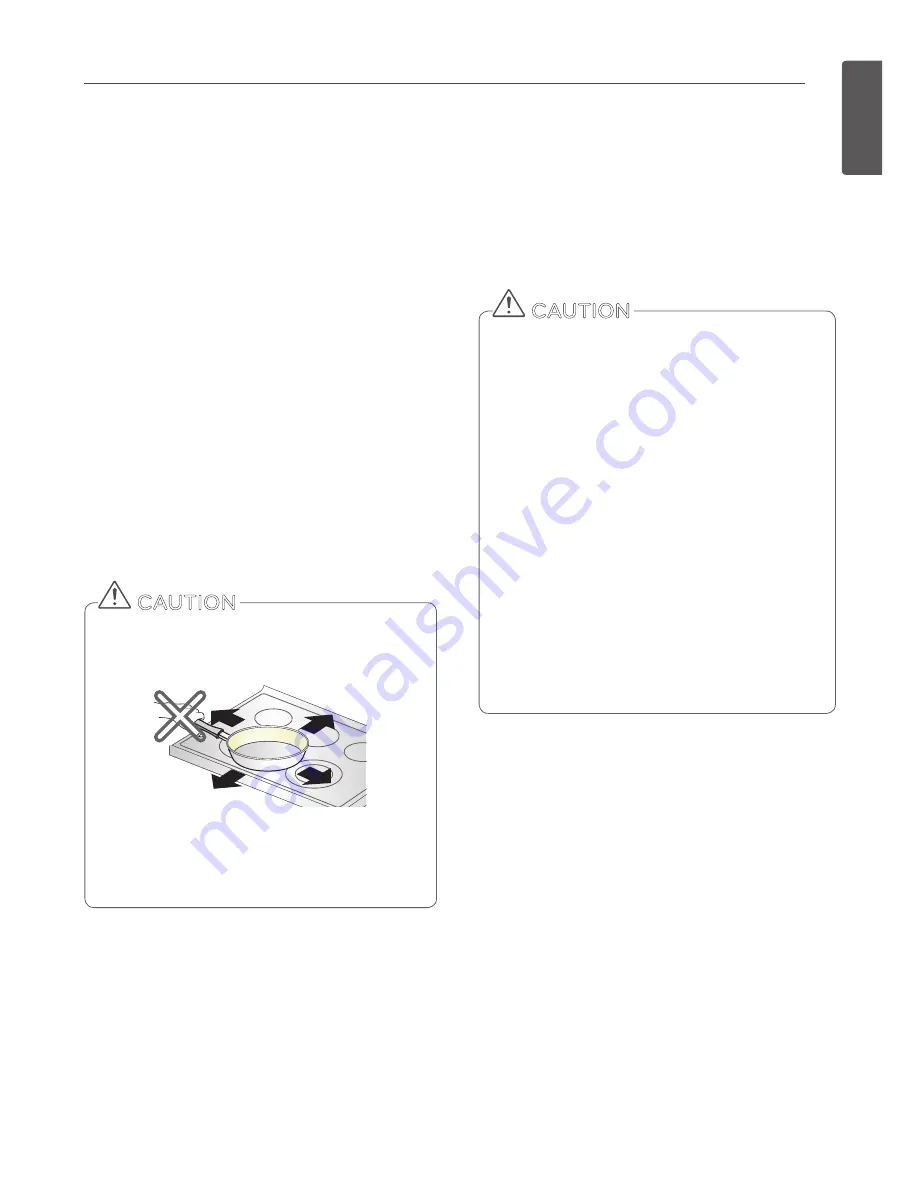
ENGLISH
31
SELF CLEAN
The self clean cycle uses extremely hot temperatures to
clean the oven cavity. While running the Self Clean cycle,
you may notice smoking or an odor. This is normal; espe-
cially if the oven is heavily soiled.
During Self Clean, the kitchen should be well ventilated to
minimize the odors from cleaning.
•
DO NOT leave small children unattended near the
appliance. During the Self Clean cycle, the outside
of the range can become very hot to touch.
•
If you have pet birds, move them to another well-
ventilated room. The health of some birds is ex-
tremely sensitive to the fumes given off during the
Self Clean cycle of any range.
•
DO NOT line the oven walls, racks, bottom or any
other part of the range with aluminum foil or any
other material. Doing so will destroy heat distribu-
tion, produce poor baking results and cause per-
manent damage to the oven interior (aluminum foil
will melt to the interior surface of the oven).
•
DO NOT force the door open. This can damage the
automatic door locking system. Use care when
opening the oven door after the Self Clean cycle.
Stand to the side of the oven when opening the
door to allow hot air or steam to escape. The oven
may still be VERY HOT.
CAUTION
Before starting Self Clean:
•
Remove the oven racks, broiler pan, broiler grid, all
cookware, aluminum foil or any other material from
the oven.
•
The kitchen should be well ventilated to minimize
the odors from cleaning.
•
Wipe any heavy spillovers on the bottom of the
oven.
•
Make sure that the oven light bulb cover is in place
and the oven light is off.
•
The oven light cannot be turned on during a self
clean cycle. The oven light cannot be turned on
until the oven temperature has cooled below 500˚F
(260˚C) after a self clean cycle is complete.
IMPORTANT:
If any sugar or food containing sugar (preserves, ketchup,
tomato sauce, jellies, fudge, candy, syrups, chocolate,etc.),
plastic or foil melts on the cooktop, remove the molten
material IMMEDIATELY with a metal razor scraper (it will
not damage the decorated cooking surface) while the
cooking surface is still hot to avoid the risk of damage to
the glass-ceramic surface. For your safety, please wear an
oven mitt or potholder while cleaning the hot cooking
surface.
Metal Marks and Scratches
1. Be careful not to slide pots and pans across the
cooktop. Doing so will leave metal markings on the
cooktop surface. To help remove these marks, use a
ceramic cooktop cleaner with a cleaning pad for ce-
ramic cooktops.
2. If pots with a thin overlay of aluminum or copper are
allowed to boil dry, the overlay may leave black dis-
coloration on the cooktop. This should be removed
immediately before heating again or the discolor-
ation may be permanent.
Cookware with rough or uneven bottoms can mark
or scratch the cooktop surface.
•
Do not slide metal or glass across the cooktop sur-
face.
•
Do not use cookware with any dirt build up on
bottom.
CAUTION
Cooktop Seal
To clean the cooktop seal around the edges of the glass,
lay a wet cloth on it for a few minutes, then wipe clean
with nonabrasive cleaners.
CARE AND CLEANING




